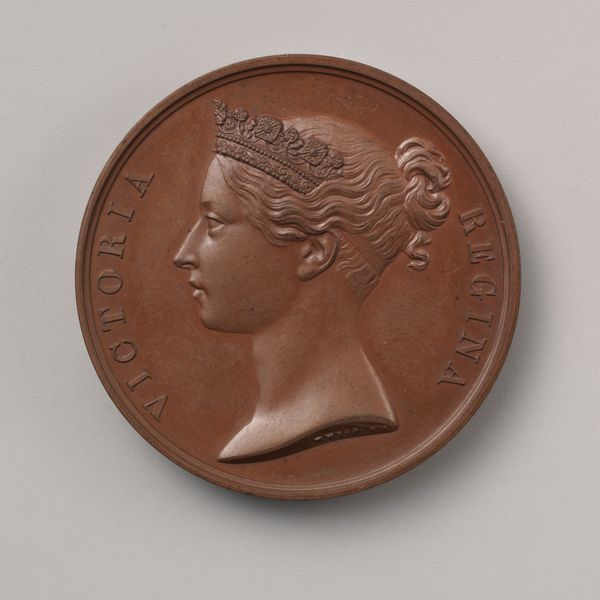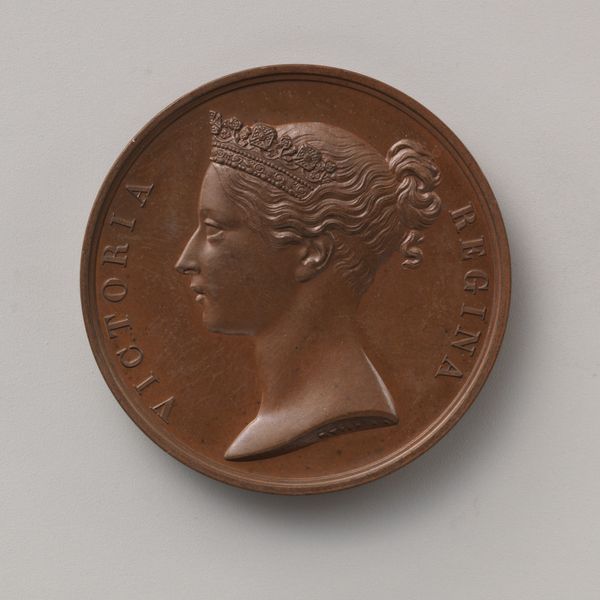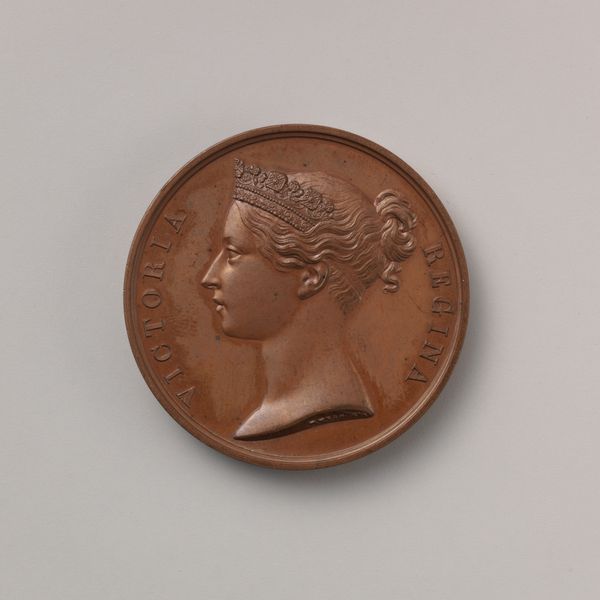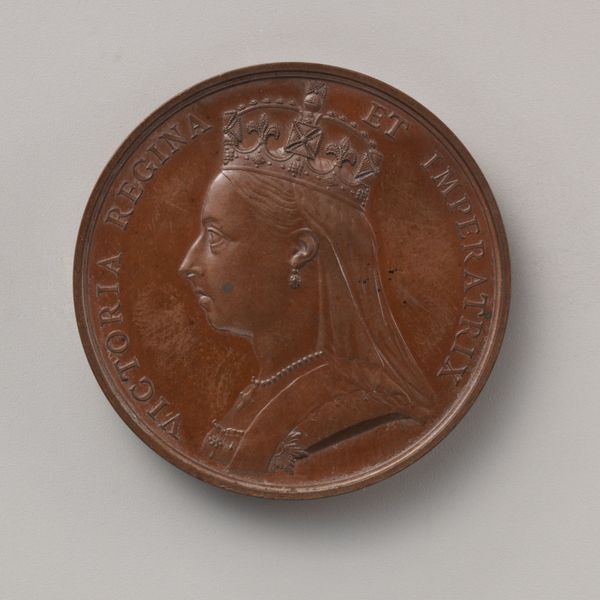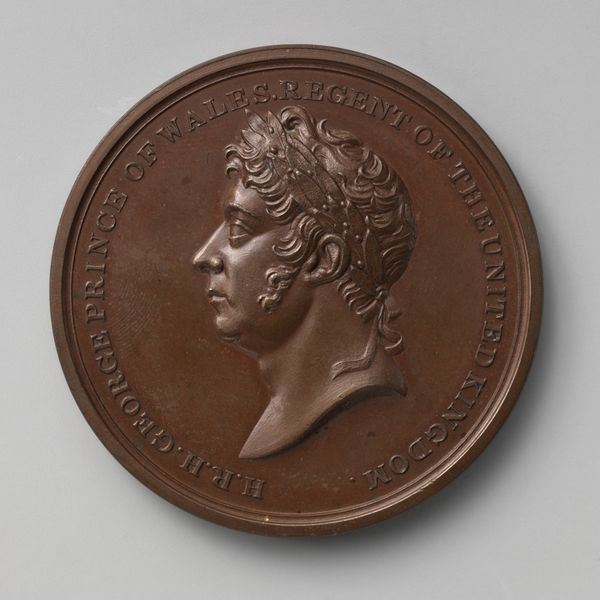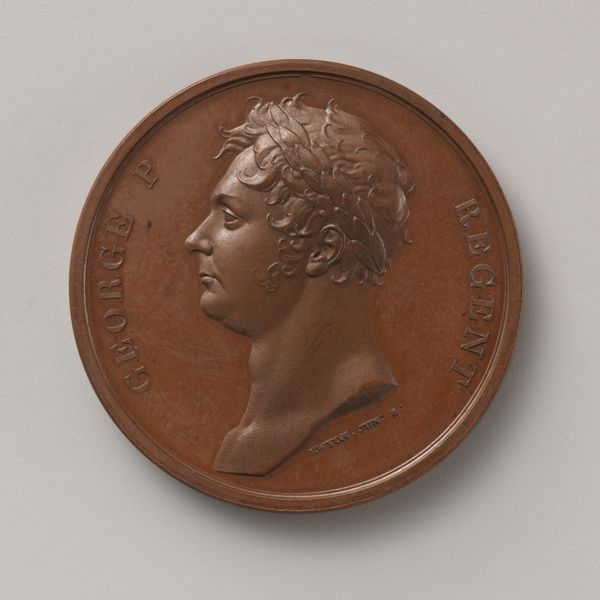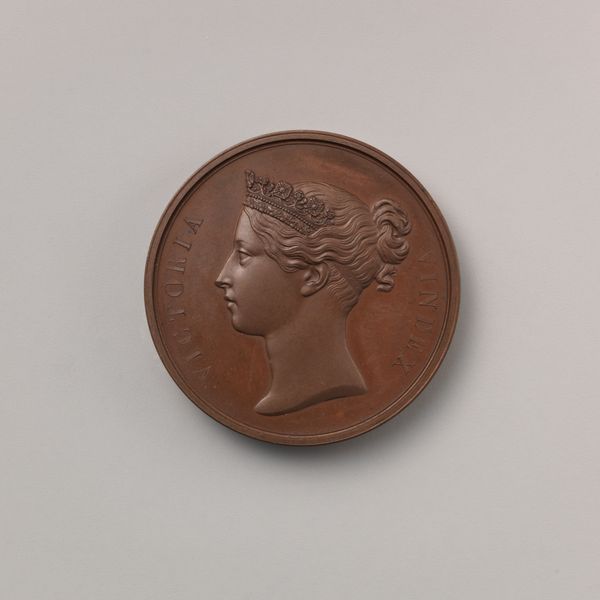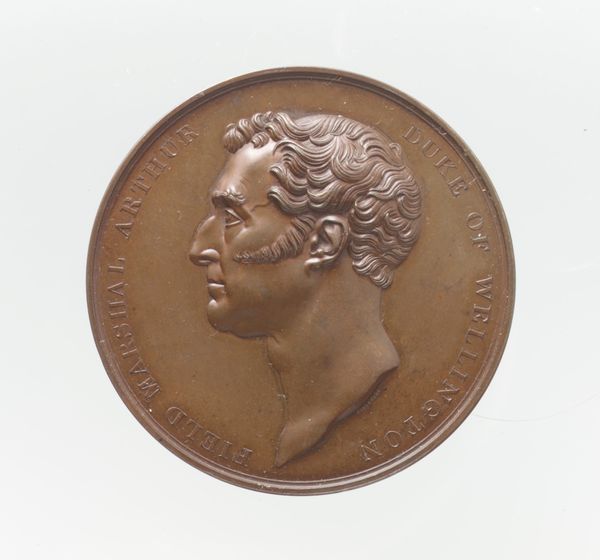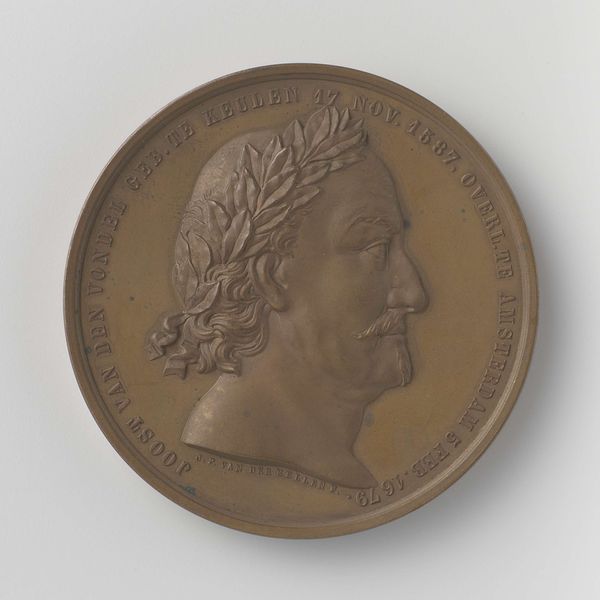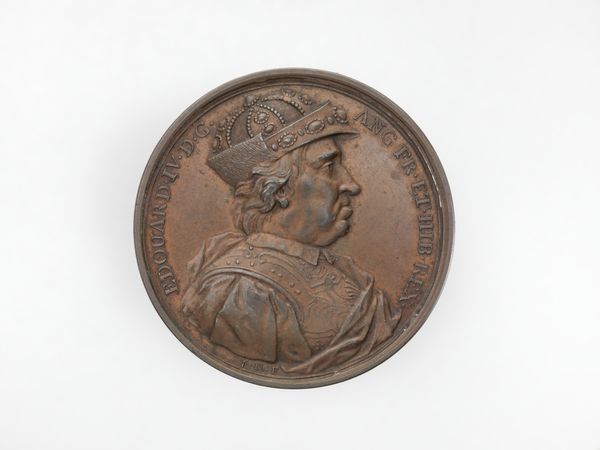
bronze, sculpture
#
portrait
#
medal
#
bronze
#
figuration
#
sculpture
#
decorative-art
#
realism
Dimensions: Diameter: 1 7/16 in. (37 mm)
Copyright: Public Domain
Editor: This is The Punjab Medal of 1848 and 1849, made in 1849 by William Wyon. It's a bronze medal, and it has such a solemn feel. I'm intrigued by its stark simplicity. What do you see in this piece? Art Historian: Well, isn't she a commanding presence in such a small space? For me, medals are tiny time capsules. They hold history but also a mirror to how a society wished to see itself. Editor: How so? Art Historian: The choice of Queen Victoria, for example. It says, 'Here is stability, here is empire'. This isn't just bronze; it’s a statement, a carefully crafted narrative cast in metal. Look how her gaze is fixed forward - strong jaw line. And those delicately engraved details – her tiara, the curls of her hair! Almost photographic. Editor: It seems like such a celebration of her. I guess I had not thought of it being political too. Art Historian: Every image of power is a political act, wouldn’t you agree? And consider the purpose – this was given to those involved in the Punjab campaign. Medals were an incentive to continue working and a reminder of how their effort helped contribute to England’s global power, wrapped in artistry, of course. Do you think that the beauty changes your perspective? Editor: It definitely adds another layer. I can see this piece as less 'objective history' now. Art Historian: Exactly! Now imagine the medal’s weight in your palm. It would be more than bronze, wouldn't it? Almost the weight of history! Editor: I am going to remember that: A weight of history in the palm of my hand. Thanks for illuminating so many different elements!
Comments
No comments
Be the first to comment and join the conversation on the ultimate creative platform.
